Revision rhinoplasty is a procedure designed to correct an unsuccessful outcome after plastic surgery has already been performed to correct the nose. Revision rhinoplasty is the only way out for patients with visible external nasal deformity or its dysfunction after rhinoplasty. Therefore, sometimes after rhinoplasty, patients notice unnatural divergence or marked asymmetry of the alars. Sometimes a hump nose becomes a "saddle-shaped" nose -- the back of the nose is too low because the surgeon has removed too much bone or cartilage tissue.
In another case, the cause of patient dissatisfaction may not be related to the surgical technique, but to the individual characteristics of the body. For example, after healing, the scar on the columella becomes large and noticeable. The septum appears more bulging and visually elongates the nose, either due to the tendency for unpredictable growth of scar tissue, or as a result of incorrect manipulation. Corrective rhinoplasty allows you to solve such problems, restore the natural correct shape of the nose, restore nasal breathing function, and restore the patient's confidence and attractiveness.
Secondary rhinoplasty - methods and methods
Often, patients who apply for a second rhinoplasty are disappointed, cautious, and lack confidence in the successful outcome of the second surgery. During the consultation, we try to collect an exhaustive medical history and study pre-rhinoplasty photos to understand what has been done and what structures are in the nose. We recommend that such patients undergo an MRI prior to undergoing revision rhinoplasty - analysis of this data allows us to objectively understand the internal structure of the nose, develop a surgical plan, and communicate with patients about the possibility of revision rhinoplastyConsistent.
Crooked nose after rhinoplasty
One of the main complaints of patients is that after rhinoplasty, the nose is curved, the tip of the nose is not graceful, and there is a bulge or depression at the back of the nose. Sometimes nose contouring may be recommended to correct minor imperfections. Unfortunately, however, the major defect can only be corrected in a second operation.
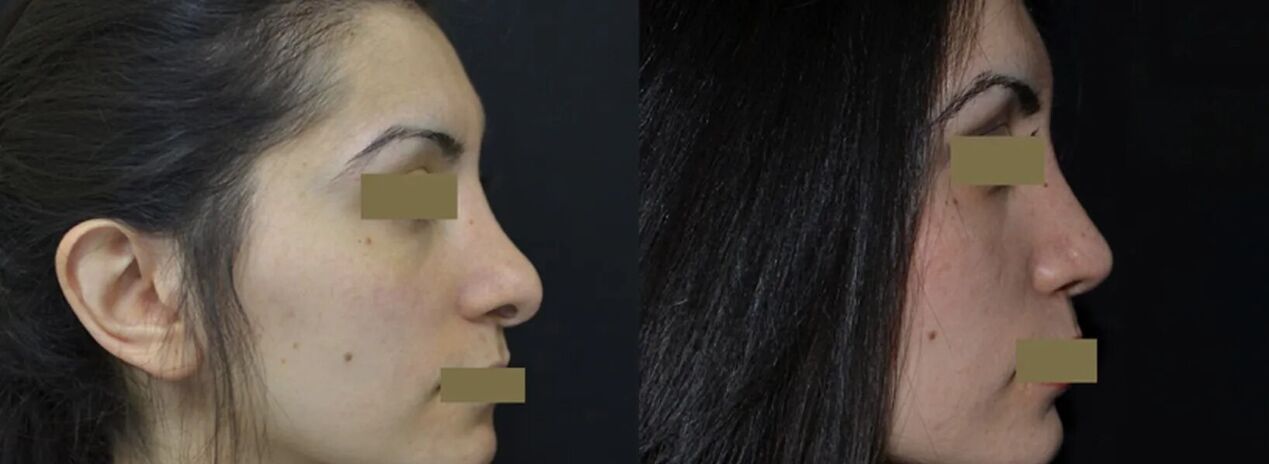
Sometimes this condition makes it possible to use medication without a second surgery, such as in the case of an excessively protruding scar. To correct minor asymmetries, we recommend a non-surgical rhinoplasty - with fillers, or with botulinum toxin-containing medication to rotate the nose tip. But more often, surgical correction is required, such as transplanting your own cartilage tissue to fill in the saddle-shaped depression or nasal tip rotation, and restore the shape of the alar by correcting the position of the nasal septum. and nasal cartilage.
The possibility of having another rhinoplasty can only be talked about 6-8 months after the first rhinoplasty. This is first because the final repair of the tissue takes a long time, the shape of the nose changes in the months following surgery, and the "defects" that patients observe immediately after the facelift may disappear. completely over time. Also, a surgery, even a minimally invasive one, will always damage tissue and nerve endings to a greater or lesser extent - so one should wait for complete healing before proceeding with a second surgery.
The latest technology in rhinoplasty using tiny instruments can eliminate the consequences of any unsuccessful operation. The main thing is to seek the help of qualified experts.
Cause of Complications: Surgeon's Error or Patient's Error?
It's a mistake to put all the blame on the patient's shoulders, but it's also a big mistake to put all the blame on the plastic surgeon. Deficiencies can be caused by poorly qualified specialists or by patients' inattentiveness to the advice they receive. In a certain percentage of cases, "crooked nose" and other complications of rhinoplasty are associated with an unfavorable course of the regeneration process, in which case no one can be blamed.
However, plastic surgeon mistakes do lead to deformities in the nose after rhinoplasty. Therefore, special attention should be paid to the selection of specialists and clinics. You cannot choose a doctor at a "low price", health and beauty can only be entrusted to experienced craftsmen. Otherwise, you may be charged twice.
Listed below are some mistakes that plastic surgeons can make and the aesthetic complications of rhinoplasty they can lead to:
Improper graft placement. Transplantation of autologous material (the patient's cartilage tissue) or the installation of synthetic implants is often used in nose reshaping. If the implant is positioned asymmetrically, the patient will see a "crooked nose" and pronounced asymmetry after the tissue has healed.
Asymmetry correction. Many nasal surgical procedures involve intervention on the bony and cartilaginous elements of the nasal skeleton, including removal of portions of the hard tissue. If the excision on the left and right sides is not uniform, the nose will be curved and asymmetrical after rhinoplasty.
As mentioned earlier, the development of aesthetic complications after rhinoplasty is not always the result of surgeon error or patient irresponsibility during the rehabilitation phase. The following are the causes of complications, which can be called the result of an unfavorable environment:
Transplant squeeze. Tissue or implant transplantation is used in many nasal surgical procedures. Unfortunately, implants can move during recovery. The result will be a curved or asymmetrical nose.
Resorption of cartilage grafts. Cartilage grafts are living tissue exposed to the action of the body's enzymes. During the unfavorable regeneration process, part of the graft can be destroyed by enzymes. The result would be a "crooked nose" or a broken symmetry of the left and right halves.
Deformation of the cartilage graft. Distortion is a Latin word that translates to "curvature". Cartilage is elastic and flexible. It may deform under pressure from other anatomical structures of the nasal bone and due to intense tissue edema. This can lead to a crooked nose.
Violation of the integration of the back bone and cartilage. During the procedure, the connections between the bony and cartilage elements that form the back of the nose are disrupted. If these structures are not properly integrated during repair, progressive deformation occurs.
Callus overgrowth. The bone regeneration process includes an intermediate stage of callus formation, which will then be replaced by mature bone tissue. If the regeneration process is too active, excess tissue can form in the place, which appears externally as a bulge, "bump" or asymmetry. A deflected diaphragm may be present.
Hypertrophy of scar tissue in the tip area. Due to the abnormal growth of scar tissue in the area of the nose tip, more precisely directly above the nose tip, excess tissue is formed, which externally manifests as coracoid deformity.
Still listing some of the mistakes patients make during recovery that can lead to crooked and deformed noses:
- wear glasses;
- Displacement or self-removal of the cast fixative;
- Self-removal of nasal splints (tampons in the nasal passages);
- Accidental mechanical damage to the nose;
- sneeze with mouth closed;
- blow off;
- Drinking alcohol, smoking during recovery;
- Get back to exercise early.
Consequences of this action
Rhinoplasty is an expensive, complex and sometimes necessary procedure. What consequences do you need to know?
When deciding to have this type of surgery, one should be aware that the procedure is fraught with complications. Not all areas of operation have inevitable natural difficulties, they will pass after a certain time. These include: hematoma, bruising under the eye, difficulty breathing, impaired sense of smell, temporary asymmetry, numbness.
What could be the reason for this?
- Violating the rules of preparation and conduct during recovery,
- A person's individual characteristics.
The final result is known only after a year, sometimes later. No doctor can predict it for sure.
Post-rhinoplasty complications
Complications after rhinoplasty can be divided into:
- aesthetic,
- Feature,
- psychology.
The last point is a little different, it comes from the first two points. However, it is sometimes singled out because it can take place in complex forms, depending on the extent of the major complication and the psychology of each individual. Likewise, functional complications may leave their mark on point 1 (aesthetics), as all functional impairments also have external manifestations.
rhinoplasty consequences
occurrence frequency
Complications occur throughout the operation and. They can be divided into 4 time periods:
- Directly during surgery, more often severe blood loss,
- Immediately after surgery
- during recovery
- at the end of the recovery period.
In addition to bleeding, complications include rough scarring, adhesions, bone damage, airway obstruction, and bruising.
Expected and unavoidable complications pass within 2 weeks. The dangers are "unexpected" complications:
- Infect,
- tissue necrosis (skin, cartilage, bone),
- Seam divergence (easy to remove).
Let's look at some of these complications in more detail.
type
edema
Swelling after rhinoplasty is a natural phenomenon. It would be wrong to call it a real complication. Edema appears in the surgical area and under the eyes. It is clearly visible immediately after surgery. It falls off after about two weeks. The puffiness may last longer - up to six months. The cause of the duration and quality of edema depends entirely on the individual.
callus
If the bone structure needs to be disrupted during surgery, callus formation cannot be avoided. Her presence is the norm. A complication is an overgrowth of bone tissue. This complication can cause the nose to deform and disrupt harmony.
Callus formation after rhinoplasty is a natural process that protects the body from external influences. This is the process of bone regeneration. First, new connective tissue appears, then thin bone fibers are formed, and finally, the bone tissue completely replaces the soft tissue. The task of the surgeon is to prevent the intensity of this process.
nose turned sideways
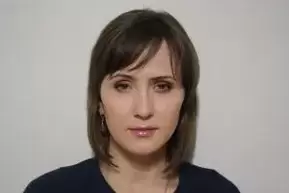
What is the purpose of surgery? If the cause is to remove the curvature of the nose, then as a direct result of surgery, the curvature is gone. However, by the end of the rehab period, it may return because the nasal tissue has no "memory". In this case, a correction is required.
But swelling can also be the cause of the curvature. In this case, it's a natural complication that goes away at a certain time. Here again, personal characteristics come into play. For someone, the period will be 2 weeks, another - one month, two, three.
Regardless, this curvature will be the norm. If the problem persists, you can talk no earlier than a year.
nose not breathing
Nasal breathing after rhinoplasty can be caused by blocked nasal passages. This usually happens during recovery. The cause of the complication is allergic or interactive rhinitis. This requires medical treatment. Surgery is only needed if treatment fails.
With delayed complications (which occur after a long time), the nasal passages may narrow, which can also make nasal breathing difficult. This can lead to uncomfortable feelings. In this case, intervention with reconstructive surgery is required because the cause of the complication is an increase in the amount of tissue inside the nostril. It needs to be cut off.
drooping nose
This complication is called "hollowing". The reason is the deformity caused by the fracture of the skull at the time of the osteotomy, at which point the fragments cannot be placed in the center. The reason may be an over-sealing of the nose. It can only be corrected by repeated osteotomy.
stench
A bad smell in the nose after rhinoplasty is a natural phenomenon. This is not a complication and is acceptable throughout the first year after surgery.
temperature
It is normal for your body temperature to rise after rhinoplasty. It doesn't last more than 3 days. In other cases (high temperature, prolonged periods), you should consult your doctor.
other complications
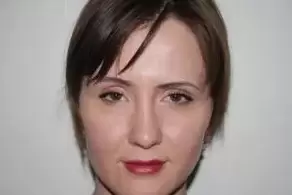
After surgery, the sense of smell is disturbed, which is natural. Slowly it will return to normal. Pale red or pink. Not only that, but they also tend to grow.
In order to eliminate them, all requirements of the surgeon needed during recovery should be met:
- Treat sutures with medication prescribed by your doctor,
- Keloid scars require corticosteroids
- In some cases, corrective surgery may be required.
Rhinoplasty is a serious but very common procedure. It is not only the experience of the specialist that matters, but also your attitude towards the procedure. Negligence is not acceptable. You must have complete trust in the surgeon and meet all necessary requirements. Of course, the qualifications of experts are unquestionable.
Facial defects are known to create public bias, which is important to people's self-esteem. Often, loss of attractiveness leads to a depressive state. That said, it is logical that facial deformities that reduce symmetry reduce patients' quality of life and self-esteem.
cause of bending
Deviated nose is a broad term used to define a deformity associated with the deviation of the nose cone relative to the midsagittal axis of the face, which passes through the center and divides the face into equal parts.
The patient's medical history included trauma and congenital nasal deformities. Of all the facial bones, the nasal bone has the most fractures, and these fractures often lead to aesthetic changes and nasal deviations. Often, the curvature of the nasal septum occurs due to its deviation, and different variants of the septum curvature allow it to align.
A crooked nose can also be caused by asymmetrical growth of nasal structures or by rhinoplasty. A nose with a concave feature may appear curved, although the structure is not actually offset from the mid-axis. Sometimes septal deformities occur during childbirth.
How does the alignment work?
Today, rhinoplasty is one of the main cosmetic procedures performed by plastic surgeons. The main indications for rhinoplasty are functional and cosmetic disorders. Rhinoplasty is a delicate and complex procedure from a functional and aesthetic point of view. So, alas, the level of revision rhinoplasty is still quite high.
A curved nose, which is the result of complex deformations of structural elements, including:
- nasal septum;
- upper and lower lateral cartilage;
- Bones of the nose cone.
This can lead to functional and cosmetic impairments. The main cause of the curvature is thought to be excessive deviation of the nasal septum.
Diaphragm curvature
Deformation is divided into two categories. They include:
- Cartilage deviation (lower 2/3);
- Skeletal deviation (upper 1/3 of nose).
Deviations of the upper third of the skeleton are usually corrected by a controlled nasal bone fracture or osteotomy and midline displacement. The goal of an osteotomy is to create movable bone segments that can be returned to a favorable anatomical orientation and position. The risk of bone displacement in the original curved position is low.
Deviations of the nasal cartilage are often one of the most complex deformities that are difficult to correct. Many of the lower 1/3 deviations involved displacement of the main nasal septum. To correct it, its base is leveled, including correction of the nasal bone and septum. Due to the large curvature of the cartilage portion, additional grafting of cartilage material may be required.
Rhinoplasty Correction
One of the most difficult tasks of rhinoplasty is correcting a crooked nose. After the first rhinoplasty, or even after the second surgery, the curvature may be preserved.
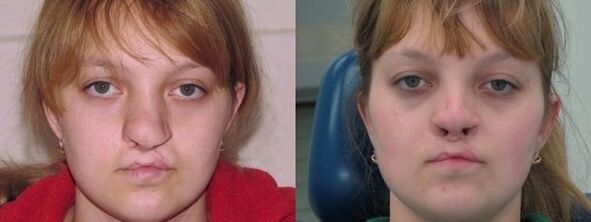
The post-rhinoplasty process can be very unpredictable. As a general rule, about 3-6% of cases may require nasal revision after surgery to correct the deformity, but in the case of nasal deformities, this number can be much higher.
Correction of the curvature of the nasal structure is complicated by many nuances:
- The main factor is that the curvature of bone and cartilage tissue has some degree of memory. Cartilage constantly tends to return to its original position. There are natural tensions in the soft tissue and cartilage structures that continue to affect the nose after a rhinoplasty, making it difficult to achieve good results after surgery. Therefore, the structure of the nose tends to drift towards its original position.
- Another factor that may cause the nose to return to its original curved shape is incomplete correction of a deviated septum. In addition, with congenitally deviated noses, a deviated septum can pass with facial asymmetry. This means that it is difficult to find the true midsagittal plane in which to try to place a new nose position.
Why is my nose crooked after rhinoplasty?
Let's not forget that getting the nose perfectly straight was quite a challenge. After significant improvements, it may show slight asymmetry or residual bias. Slight flex is considered acceptable. The most difficult task is to make the frontal view symmetrical, since incoming light casts shadows and the nose may appear asymmetrical.
There are many reasons why the septum may be bent after rhinoplasty. This may be the result of asymmetric edema and/or soft tissue nasal bone drift. Healing after rhinoplasty is a dynamic process.
For the first time a few weeks after surgery, the swelling of the structure may be asymmetric. This can create the illusion that the diaphragm is bent.

The intensity of post-operative swelling may also fluctuate in different parts of the nasal structure. Many swellings after rhinoplasty go away within a month. It takes longer to resolve the last 25% of swelling, over a year or more. The final results of the surgery may take 20-36 months.
Puffiness after rhinoplasty largely depends on the nature of the nasal surgical structure, surgical approach, post-operative care, and skin thickness. After an open rhinoplasty, if an external incision is made near the root of the nose, the swelling will be longer and larger than with a closed rhinoplasty. People with thicker skin experience more swelling.
The swelling happens under the influence of gravity, which means the upper part of the back has become the first. Generally speaking, the nose has some degree of swelling throughout the year.
When the septum is aligned and held well, the nose initially appears straighter and then, most commonly, deviates after a period of time. At first, swelling hides the deviation and may become more pronounced over time.
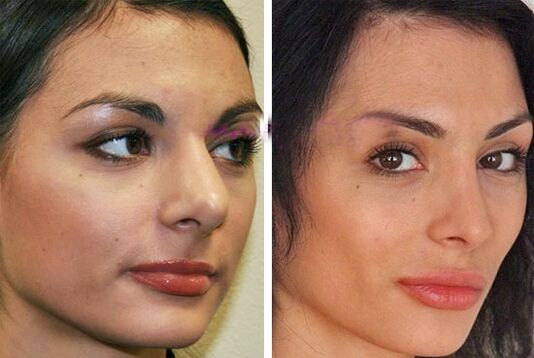
Revision rhinoplasty aims to correct defects that were not considered at the first surgery, such as a deviated septum that distorts the appearance, or caused by incorrect rhinoplasty or poor healing.
Rhinoplasty must involve two distinct procedures, on the left and right sides of the nasal septum. Asymmetry may occur due to uneven correction on both sides and varying scar strength during the healing process. Bending may occur due to excessive removal of cartilage on one side. Deviated diaphragms can be corrected. Revision rhinoplasty may involve cartilage grafts.
The full results of rhinoplasty can be seen after one year of observation. If the curvature of the nose persists after surgery, it may be necessary to wait 5-10 months for revision rhinoplasty. Very early surgery can lead to new problems.




















